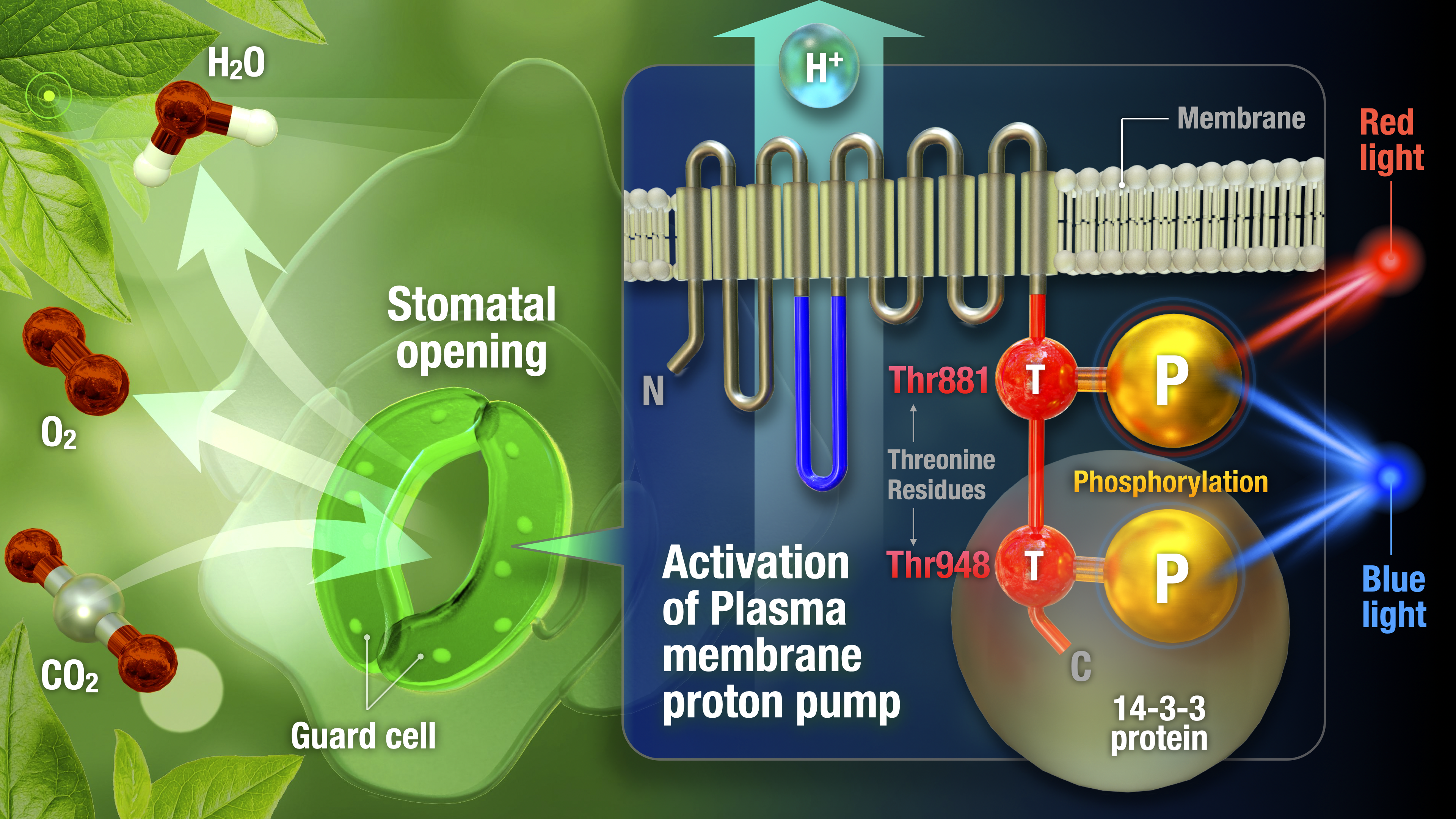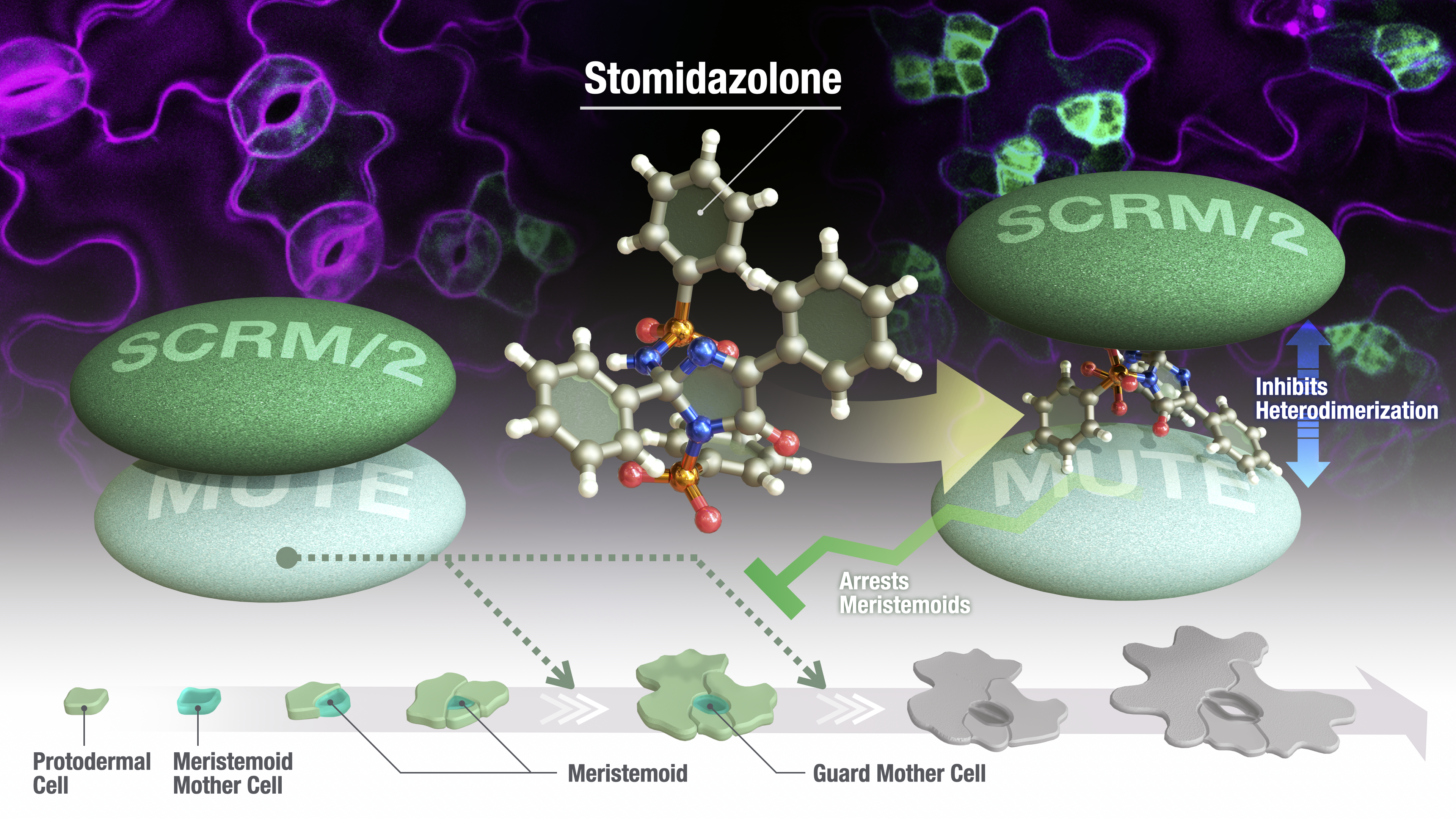Plant stomata are pores in the epidermis of plant leaves. They play a key role in regulating the gas-water exchange between the plant and the atmosphere, which enables photosynthesis and transpiration. Stomata have been shown to respond to a wide range of environmental conditions, including temperature, water availability, light intensity, and leaf CO2 levels.
Controlling the opening and closing movements of stomata has long been considered critical to increasing biomass, drought tolerance in crops, and reducing global warming by using plants to reduce carbon dioxide. As stomatal movements play a central role in plant growth and other stress responses, they have attracted attention, especially for agricultural purposes.
The opening of the stomata is regulated by the enzyme H+-ATPase, which is activated by light to use a form of energy called ATP to open the stomata. When the plant needs to close the stomata, the enzyme uses phosphate to phosphorylate the enzyme, which inhibits it.
A team led by Kenichiro Itami at the Institute of Transformative Bio-Molecules (WPI-ITbM) at Nagoya University in Japan have now discovered 2,6-dihalopurines, named AUs, as a new class of stomatal opening inhibitors, and their possible target proteins LRX3-5 and RALF peptide. In particular, AU3, the representative AU derivative, may be involved in the pathway associated with the phosphorylation of the plasma membrane H+-ATPase in stomatal guard and mesophyll cells, suggesting an important role in stomatal closure.
The involvement of LRXs–RALF in stomatal movement is a previously unknown pathway. In addition, most of the previously identified target proteins for stomatal opening inhibitors are intracellular proteins, whereas LRXs are extracellular proteins. This suggests that the inhibition of stomatal opening by LRXs may be via a different approach.
The development of new molecules through phenotypic screening and identification of their target proteins will be a major topic of research in the future. It is expected to lead to the proposal of new mechanisms of stomatal movement that will have applications in both agrochemicals and chemical biology research.
Ayaka Ueda, who conducted most of the experiments in the work, says, “In view of the significance of plant science and chemical biology, the discovery of new stomatal movement modulators described herein should attract great interest from a wide range of scientists. The present work not only represents an important achievement in emerging plant chemical biology, but also showcases the significant power and potential of ITbM where chemists, biologists, and theoretical scientists work together to achieve big goals in science.”
The study, "Discovery of 2,6-Dihalopurines as Stomata Opening Inhibitors: Implication of an LRX-Mediated H+-ATPase Phosphorylation Pathway," was published in the journal ACD Chemical Biology on January 13, 2023, at https://pubs.acs.org/doi/full/10.1021/acschembio.2c00771 .
Authors
Ayaka Ueda, Yusuke Aihara, Shinya Sato, Keiko Kano, Emi Mishiro-Sato, Hiroyuki Kitano, Ayato Sato, Kazuhiro J. Fujimoto, Takeshi Yanai, Kazuma Amaike, Toshinori Kinoshita, and Kenichiro Itami







